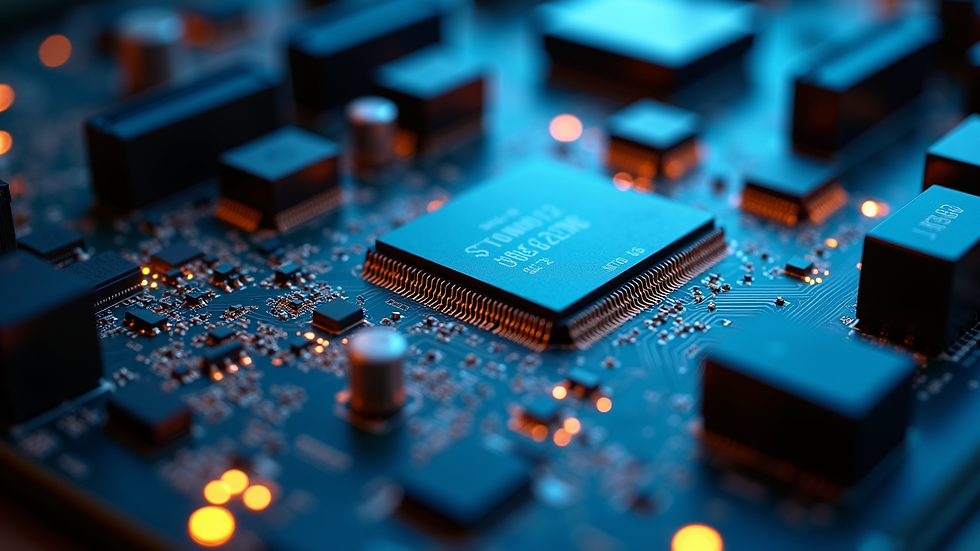Binary Data Representation Explained
- thecomputerscience4
- Nov 3
- 3 min read
Binary data format is fundamental to how computers store, process, and communicate information. At its core, it involves representing data using only two symbols - typically 0 and 1. This simple yet powerful system underpins everything from basic calculations to complex multimedia files. In this article, we will explore the essentials of binary data format, how it works, and why it is crucial in computing.
What Is Binary Data Format?
Binary data format refers to the way information is encoded using binary digits, or bits. Each bit can have one of two values: 0 or 1. These bits are combined in sequences to represent numbers, characters, images, sounds, and more. The binary system is the foundation of digital electronics and computer architecture.
For example, the decimal number 5 is represented in binary as 101. Each position in the binary number corresponds to a power of 2, starting from the rightmost bit. This positional value system allows computers to perform arithmetic and logical operations efficiently.
Key Characteristics of Binary Data Format
Simplicity: Only two states (0 and 1) make it easy to implement with electronic circuits.
Reliability: Binary signals are less prone to noise and degradation.
Universality: Used across all modern computing devices.

How Binary Data Format Works in Computing
Computers use binary data format to represent all types of data internally. This includes:
Numbers: Integers and floating-point numbers are stored in binary.
Text: Characters are encoded using standards like ASCII or Unicode, which assign binary codes to each symbol.
Images: Pixels are represented by binary values indicating colour and intensity.
Audio and Video: Sound waves and video frames are digitised into binary sequences.
Example: Representing Text in Binary
Consider the word "CAT". Using ASCII encoding:
C = 67 decimal = 01000011 binary
A = 65 decimal = 01000001 binary
T = 84 decimal = 01010100 binary
The computer stores "CAT" as the binary sequence:
`01000011 01000001 01010100`
This binary data can then be processed, transmitted, or stored.
Binary Data Format in Memory and Storage
Data in binary format is stored in memory cells or on storage devices as electrical charges or magnetic states. Each bit corresponds to a physical state that can be read or written by the computer hardware.

Types of Binary Data Formats
Binary data formats vary depending on the type of data and its intended use. Some common types include:
Raw Binary Files
These files contain data in pure binary form without any metadata or formatting. They are efficient but require specific knowledge to interpret.
Binary Executable Files
These contain machine code instructions that the CPU executes directly.
Image Formats (e.g., BMP, PNG)
Store pixel data in binary, often with compression.
Audio Formats (e.g., WAV, MP3)
Encode sound waves as binary data, sometimes compressed.
Video Formats (e.g., MP4, AVI)
Combine audio and image binary data with timing information.
Why Use Binary Data Formats?
Efficiency: Binary formats are compact and fast to process.
Compatibility: Standard binary formats ensure interoperability between systems.
Precision: Binary representation allows exact storage of numerical data.
Practical Applications of Binary Data Format
Understanding binary data format is essential for various fields:
Programming: Developers manipulate binary data for file handling, networking, and hardware control.
Data Transmission: Binary encoding ensures reliable communication over networks.
Digital Media: Creation and editing of images, audio, and video rely on binary formats.
Cybersecurity: Encryption and hashing algorithms operate on binary data.
Tips for Working with Binary Data
Use appropriate tools and libraries to read and write binary files.
Always consider endianness (byte order) when interpreting binary data.
Validate binary data to prevent corruption or security vulnerabilities.
Exploring binary data representation in Depth
The concept of binary data representation is central to computer science education. It explains how data is encoded, stored, and manipulated at the most fundamental level. This knowledge helps in understanding how computers function internally and how software interacts with hardware.
By mastering binary data representation, one gains insight into:
Data encoding schemes
Memory architecture
Instruction sets and machine language
Data compression and encryption techniques
Enhancing Your Skills with Binary Data Format
To deepen your understanding and practical skills:
Experiment with binary number conversions.
Write simple programs to encode and decode binary data.
Explore file formats and try parsing binary files.
Study computer architecture and digital logic design.
These activities will build a strong foundation in how digital systems operate and prepare you for advanced topics in computing.
Binary data format is the language of computers. Grasping its principles unlocks the door to understanding modern technology at its core. Whether you are a student, developer, or enthusiast, appreciating how binary data works will enhance your ability to work effectively with digital systems.



Comments